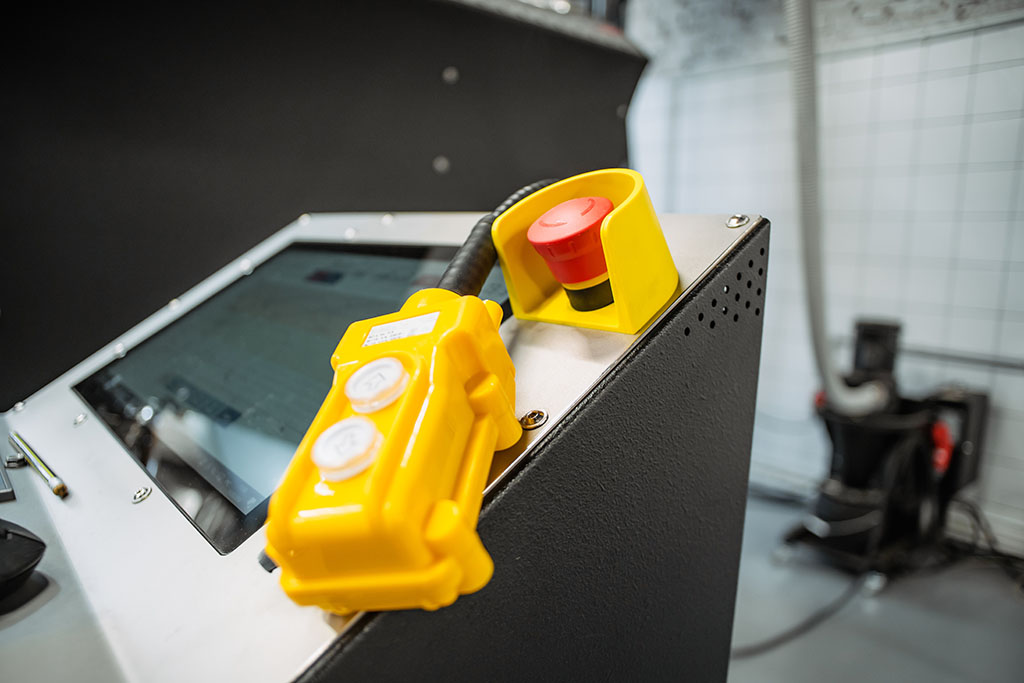Summary:
- PLC and HMI serve different roles: PLCs control machines, while HMIs display data and allow user interaction.
- PLCs are hardware-based, designed for real-time processing in tough industrial environments.
- HMIs are interface tools, built to visualize data and simplify operator control.
- Programming and configuration differ: PLCs use logic-based code; HMIs are designed through visual tools.
- Both work best together, and Open Automation Software can help unify them with real-time data connectivity and visualization.
Every smart, efficient automation system has a behind-the-scenes team making it all work. At the center of that team is PLC and HMI.
They show up together so often, it’s easy to assume they’re just two sides of the same coin. But there’s more to the story. And understanding the difference between them can help you get the most out of your automation setup.
In this post, we’re breaking down what sets PLC and HMI apart, why that matters, and how Open Automation Software supports both with powerful tools for real-time data access and industrial integration.
1. Definition and Core Purpose
To understand the differences between PLC and HMI, it helps to start with what each one is designed to do.
A Programmable Logic Controller (PLC) is essentially the brain of an automation system. It’s a rugged, industrial computer that processes input signals (like sensor data), makes decisions based on a programmed logic, and sends output signals to control machines, motors, valves, and more. Its main job is to execute tasks with speed, reliability, and precision, often in harsh environments where standard computers wouldn’t survive.
A Human-Machine Interface (HMI) plays a different role. It’s the visual gateway that lets operators interact with the PLC and the broader system. Through screens, graphics, and controls, the HMI presents real-time information in a way that’s easy to understand and respond to. This could include viewing a temperature reading, starting a machine, or acknowledging an alarm.
So, while the PLC and HMI are deeply connected, they serve two very different purposes. One controls the process; the other communicates it. Both are essential to modern automation, but they approach that goal from opposite directions.
2. Hardware vs. Interface
One of the most noticeable differences between HMI and PLC lies in their physical makeup.
A PLC is a piece of industrial-grade hardware built to endure tough conditions, like dust, vibration, and extreme temperatures. It’s designed to run nonstop, executing control logic that keeps machinery and processes running efficiently. Think of it as the system’s muscles and reflexes.
On the other hand, an HMI is less about physical durability and more about accessibility. It’s typically a touchscreen panel, monitor, or software interface that runs on a PC or tablet. Its role is to display data collected from the PLC and allow human operators to make adjustments, set parameters, or respond to alerts.
When comparing HMI vs PLC, this distinction is clear: the PLC physically interacts with the machinery, while the HMI provides the interface for humans to interact with the system. Each serves a separate but equally critical function.
3. Programming and Configuration
How PLCs Are Programmed
Programming a PLC involves writing logic that tells the system how to respond to specific inputs. This logic is typically built using languages defined by the IEC 61131-3 standard, such as ladder logic, function block diagrams, or structured text. Engineers use specialized software to create and upload these programs directly to the PLC hardware.
These programs define every decision the PLC will make, from turning on a conveyor belt when a sensor is triggered to stopping a machine during an emergency shutdown. Once loaded, the logic runs continuously and deterministically, meaning the PLC always knows precisely what to do under specific conditions.

How HMIs Are Configured
Configuring an HMI is a more visual process. Instead of logic-based programming, HMI setup focuses on building user interfaces that display information in an intuitive way. Designers can add gauges, alarms, trends, and buttons that map directly to PLC variables or tags.
The goal of HMI configuration is usability. Operators should be able to glance at the screen and instantly understand the state of the system. Navigation should be simple, and controls should respond clearly to user input.
Different Tools, Shared Purpose
While HMI and PLC systems use different tools and design approaches, they’re ultimately part of the same ecosystem.
The PLC defines the behavior of the system, and the HMI gives users access to that behavior. Both need to be configured correctly to ensure a reliable and user-friendly automation environment, often supported by tools like a universal data connector that simplifies integration.
4. Data Processing vs. Visualization
A PLC handles the logic and decision-making behind an automation system. It reads input values, runs programmed instructions, and controls outputs like motors or valves. This process happens continuously and quickly, making the PLC ideal for managing real-time operations.
An HMI translates that data into something people can easily understand. It displays system status, trends, and alarms through user-friendly graphics and controls. Instead of raw numbers, operators see visual feedback that helps them make fast, informed decisions.
When comparing PLC vs HMI, the key difference is focus. The PLC processes and controls, while the HMI presents and informs. Together, they form a complete system for both machine automation and human oversight.
5. Maintenance and Troubleshooting
Maintaining a PLC involves both hardware and software tasks. Technicians may need to replace modules, check input/output connections, or update control logic when system changes occur. Diagnosing issues often requires reviewing error codes or diving into the program to pinpoint where logic may be failing.
Troubleshooting an HMI usually focuses on the user interface. This can include resolving screen freezes, communication errors, or incorrect data display. Since HMIs are the window into the system, even minor interface problems can impact how quickly operators respond to events.
When it comes to identifying system issues, PLC and HMI offer different types of insight. The PLC handles internal control logic, while the HMI provides visibility into that logic. A problem may originate in the PLC but show up first on the HMI screen, making both tools essential for quick diagnosis.
Making the Most of PLC and HMI in Automation
Clear communication between machines and people is at the heart of every successful automation system. Understanding how PLC and HMI technologies serve different roles helps you make better choices when designing, upgrading, or maintaining your operations.
As industrial systems become more connected and data-driven, having the right tools in place makes a measurable difference. Open Automation Software gives you the flexibility to integrate, visualize, and act on real-time data from both PLCs and HMIs, all within a single, streamlined platform.
Ready to see it in action? Request a free, interactive demo of Open Automation Software and have all your questions answered by our team of experts. It’s the best way to explore what’s possible with the right automation solution in place.
